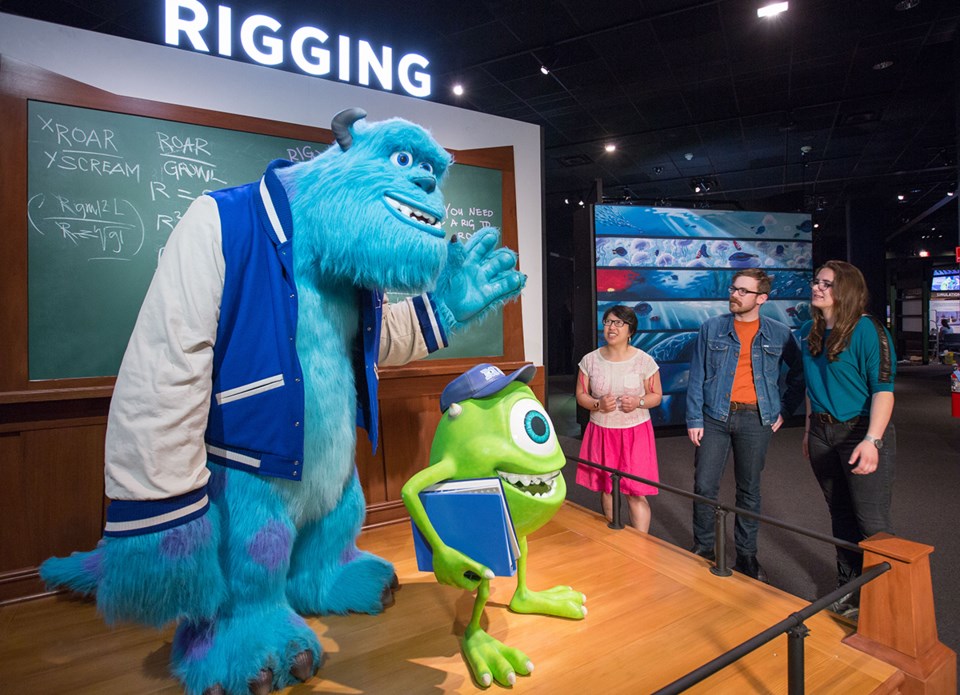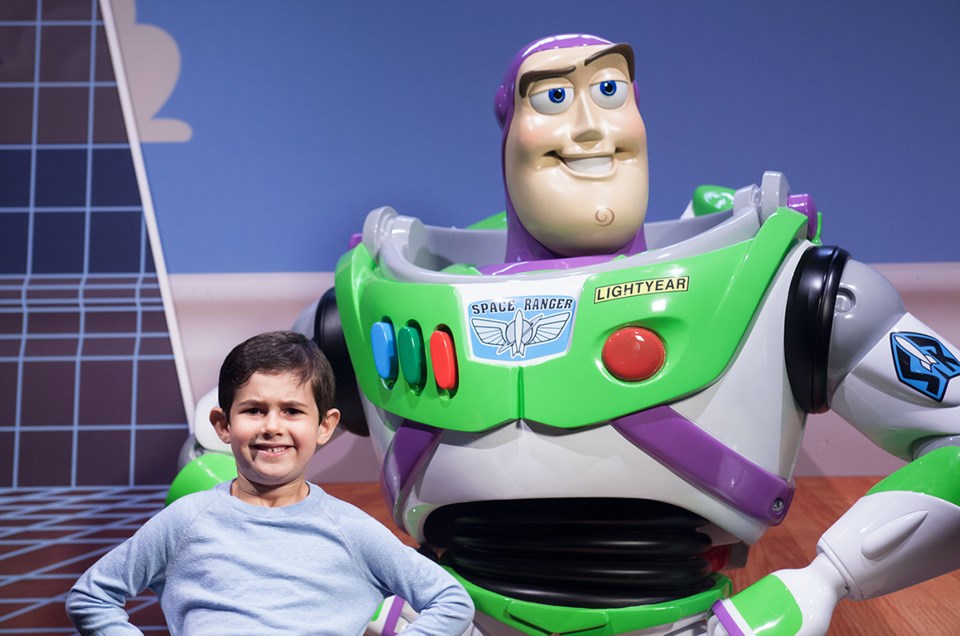Picture a group of showbiz professionals. Who immediately comes to mind? You probably envisioned some combination of actors, directors, screenwriters, and camera ops — and probably not a parade of scientists, mathematicians, computer technicians, and engineers.
But the second group is just as essential as the first in the animation sphere, and a new exhibition at Science World aims to connect viewers to the science behind some of the top-grossing animated films of all time.
The highly anticipated, 12,000-square-foot exhibition is aptly named The Science Behind Pixar. The exhibition invites visitors to explore eight stages of the Pixar digital pipeline — Modelling, Rigging, Surfaces, Sets & Cameras, Animation, Simulation, Lighting, and Rendering — via interactive displays that pull back the curtain on the science-driven magic behind fan favourite films like Toy Story, Monsters, Inc., Finding Dory, and Ratatouille.

Pixar is a leader in the entertainment world because of how well it utilizes and navigates STEAM, the go-to shorthand term for Science, Technology, Engineering, Art, and Math, says Rob Lunde, Science World’s guru of temporary exhibitions, in a recent phone call with the Courier and Jo-Ann Coggan, Science World’s curator for The Science Behind Pixar.
“It takes a lot of thought by a whole group of creative people from a variety of disciplines in order to create a Pixar film, because you’re creating everything from scratch,” says Lunde. “There’s a kind of misnomer about how computers create animated movies; people make these movies, and computers are just the tools they use. There are huge teams behind all of these sections of the pipeline working on these incredible challenges. Pixar films tend to be groundbreaking because they don’t like to repeat the same thing again, and they’re always upping the ante, so they’re always going forward.”
Lunde offers the character of Sully in Monsters, Inc. as an example of science-driven movie magic. The Pixar team set themselves the challenge of making Sully’s fur look soft, flowing and realistic. In order to accomplish this, “you have to have physicists figure out how fur moves, and then you have to have mathematicians write the formulas for those movements, and that has to be encoded by computer scientists, and artists are also involved with basically what the fur is going to look like,” says Lunde. “That’s STEAM in action right there.”
The Science Behind Pixar is that rare exhibition that appeals to pretty much everyone, says Coggan: Millennials who grew up with Pixar films, parents whose children grew up with Pixar, and anyone who’s ever watched a Pixar film and wondered, ‘How’d they do that?’
“There’s nobody who isn’t going to get something out of visiting this experience, whether it be reminiscing or learning or gaining an understanding,” says Coggan.
The exhibition begins with a five-minute intro video that lays out the eight different steps of Pixar’s digital pipeline, after which it’s up to the visitor to plot their own course through the 40 interactive elements, “which in reality is how a Pixar movie is made,” notes Coggan. “Yes, you start with the story and art, and yes, you end with rendering, but there’s a lot of back and forth throughout the process of making a movie.”
Visitors can render one of the scenes from Inside Out, play with the lighting in Ratatouille and Up, and learn about the 3D graphics in Finding Nemo and Finding Dory. There are videos featuring scientists, technicians, animators, and producers chock-full of anecdotes about making Pixar films. Coggan recommends visitors give themselves at least an hour to explore the exhibition.
The Science Behind Pixar is an especially eye-opening exhibition in a city like Vancouver, where the animation industry is a flourishing and critical segment of the local screen scene. Several key players — including the Vancouver Film School and Atomic Cartoons — have been invited to use the exhibition to connect with kids who might be interested in pursuing a career in the animation field, says Coggan.
“There’s so much opportunity right here in this city, let alone worldwide, and the technological advancements that are going on in animation and filmmaking in general, I think [the exhibition] is going to pique interest. I think kids are going to be inspired to be like, ‘I like art and science; this is something I could actually do,’ whether it’s in animation movies or videogames.”
Science World is adding extended hours for The Science Behind Pixar — and every Tuesday beginning June 5, they’ll be screening a Pixar film in the order that they were released, beginning with 1995’s Toy Story.
The Science Behind Pixar runs May 19 to January 6, 2019 at Science World. Schedule and ticket information at ScienceWorld.ca.
Sabrina Furminger's column, The Showbiz, runs weekly in the Vancouver Courier. She is also the editor of YVRScreenScene.com where you can find stories and profiles about Vancouver's film industry.



